Even for those who know little about cars, the three letters, 'AMG' has a very special meaning. Hidden in a secret workshop somewhere in Germany, AMG is Mercedes' skunkworks division, and they dare to challenge the sensible and sterile nature of the same company that makes cars for well-to-do businessmen, courtly dignitaries, and bloodthirsty dictators. Mercedes approaches the art of building cars with great care and practical problem solving, going through every inch with a fine-tooth comb.
Meanwhile, AMG's madness extends to resurrecting Frankenstein's monster like a chicken running about without its head, yelling ferociously, while simultaneously being on fire. That's why we love so much about AMG, simply because its "well, why not?" mentality to pushing a car beyond its limits its just silly fun, as it will forever and always put a grin on even the most stoic of faces. These days, as the now-monolithic organisation has toned down the lunacy just a bit, it's worth taking a stroll down memory lane to remind ourselves what AMGs are made of.
The Mad Doctor.
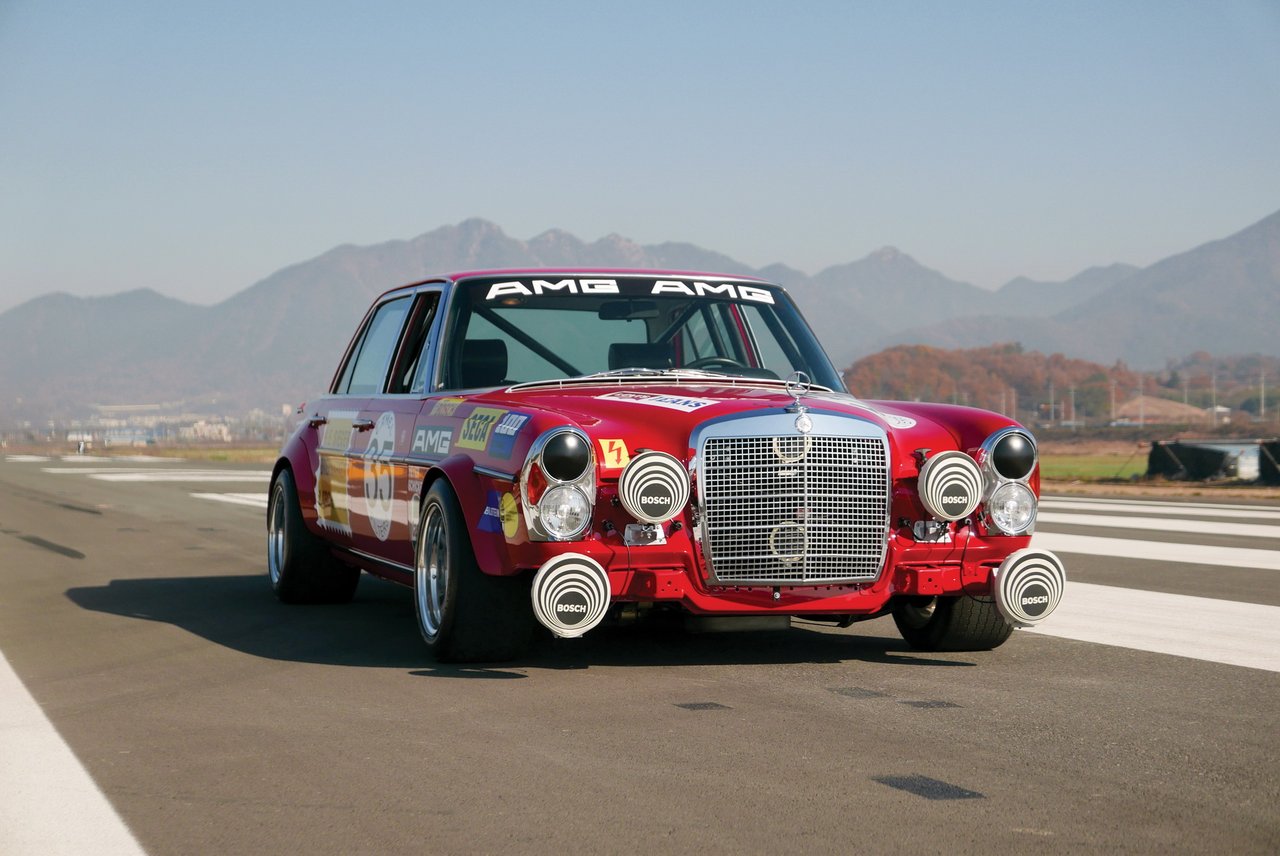
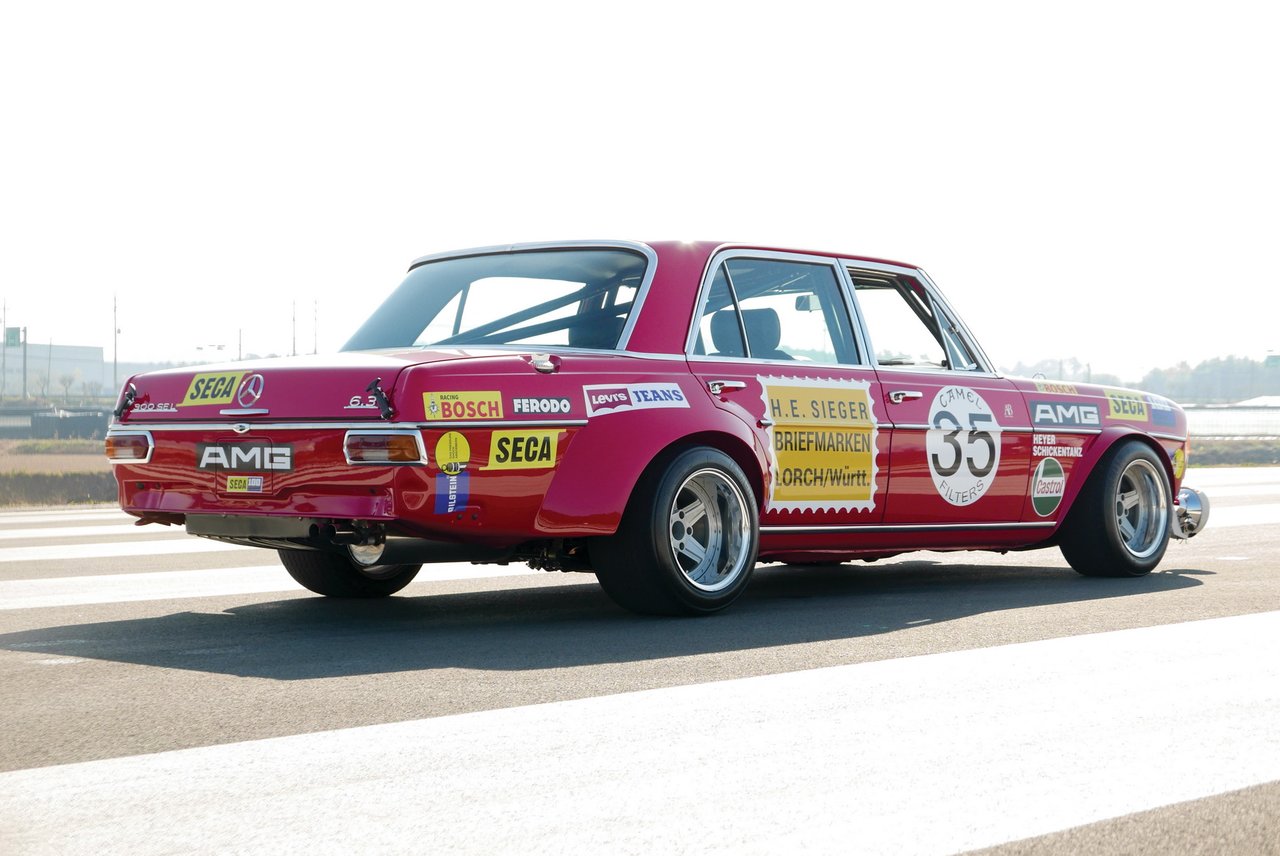
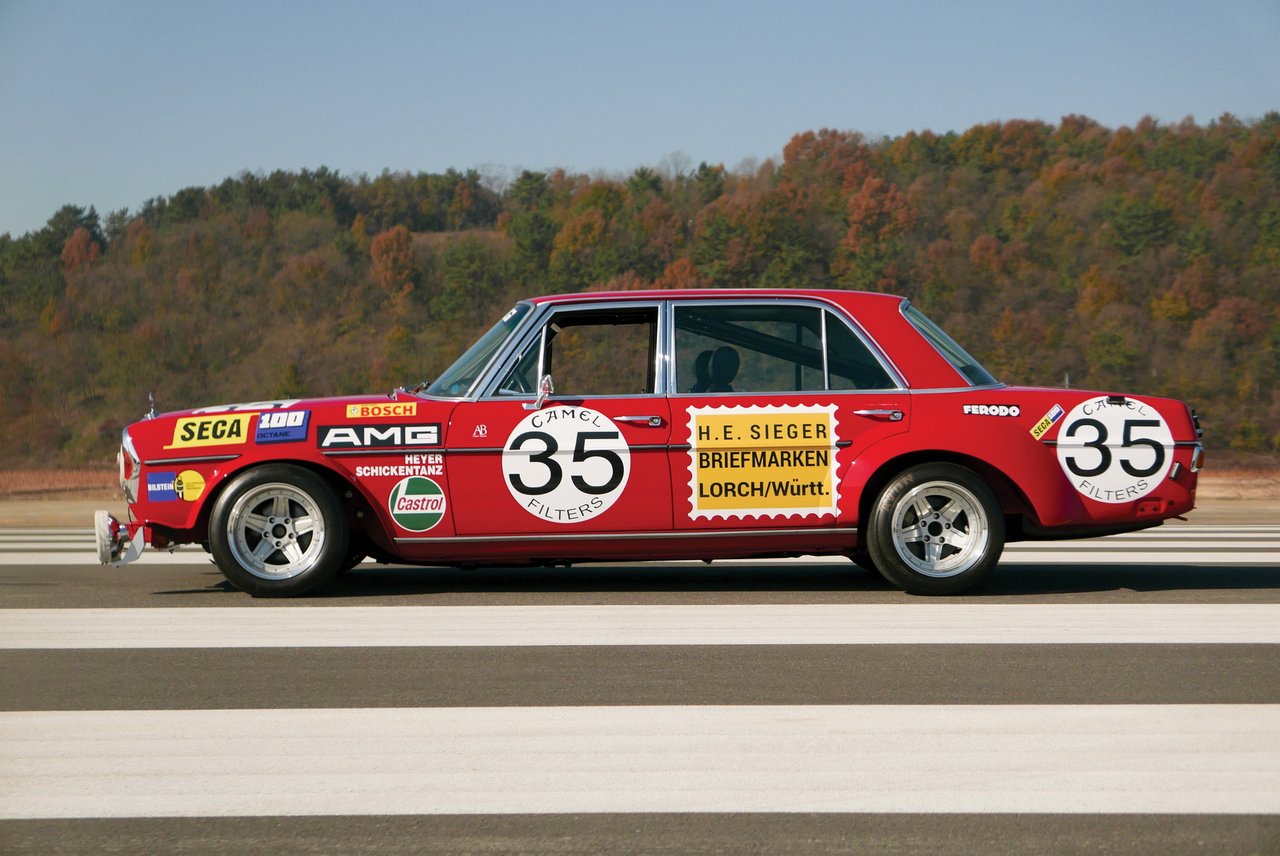
Credits to: RM Sotheby's - 1969 Mercedes-Benz 'Red Pig' | Where it all began...
Beyond the glass walls of their new headquarters, AMG had very humble beginnings. It was founded in 1967 by two enthusiastic, former Mercedes engineers. The name is an abbreviation of (Hans Werner) Aufrecht, (Erhard) Melcher, and Großaspach, with the latter being Mr. Aufrecht's birthplace. They started this little outfit in a garage, to help tune and create racing engines, sometimes working through the dead of night to fulfil orders.
People really loved what AMG's engines did for them, including one discerning customer who caught wind of their talents. This keen client had an unusual request; assist in preparing his Mercedes-Benz 300 SEL for racing. The Three-Pointed Star themselves couldn't help, after a self-imposed exile since the deadly accident at the 1955 Le Mans 24-hours. On that fateful year, Pierre Levegh's Mercedes crashed, and subsequently flew into a crowd of onlooking spectators.

It shocked the world, and likely haunted the Mercedes works team, as it was the single bloodiest incident in motorsports, even till this day. It killed 84 people including Levegh, whose body was thrown out of the car, lying dead in front of his wife, while injuring nearly 180 others. Large debris of his 300 SLR came flying onto the crowded stands like a scythe, decapitating bystanders as efficiently as a guillotine. Mercedes wouldn't re-enter motorsports until the late 1980s, and it was through tuning shops and engine builders like AMG, that it stayed in the loop.
That said, the request made to AMG's mad doctors was quite a challenge, even for their standards. Although the 300 SEL was the fastest four-door in the world at the time, it wasn't designed for racing. Being the Mercedes S-Class of its day, it was a large and luxurious saloon car more at home with ferrying around VIPs between their important meetings in splendour, not to attack an apex with supreme precision. Made of steel, leather, and wood, it weighed nearly 2-tonnes.

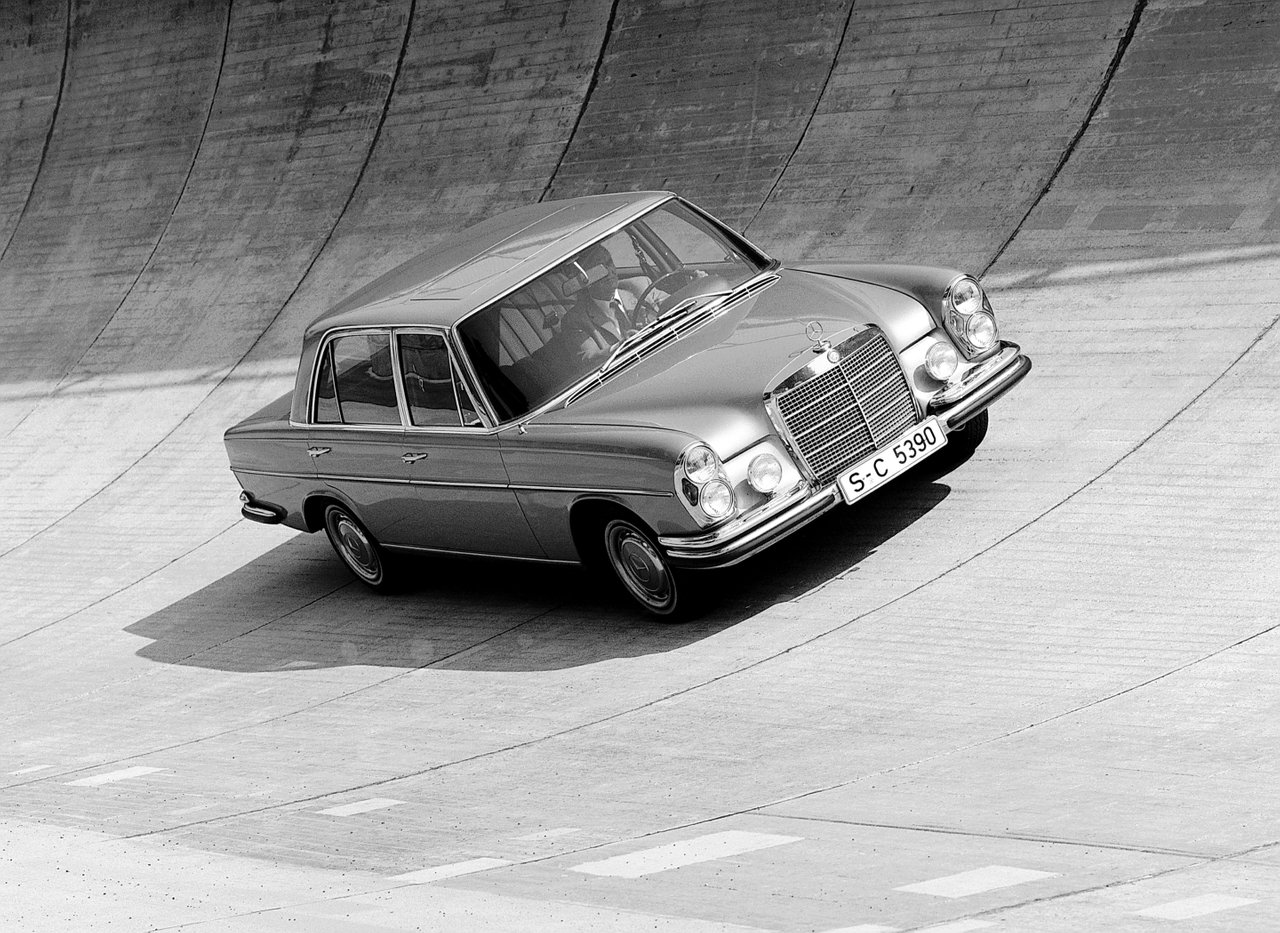
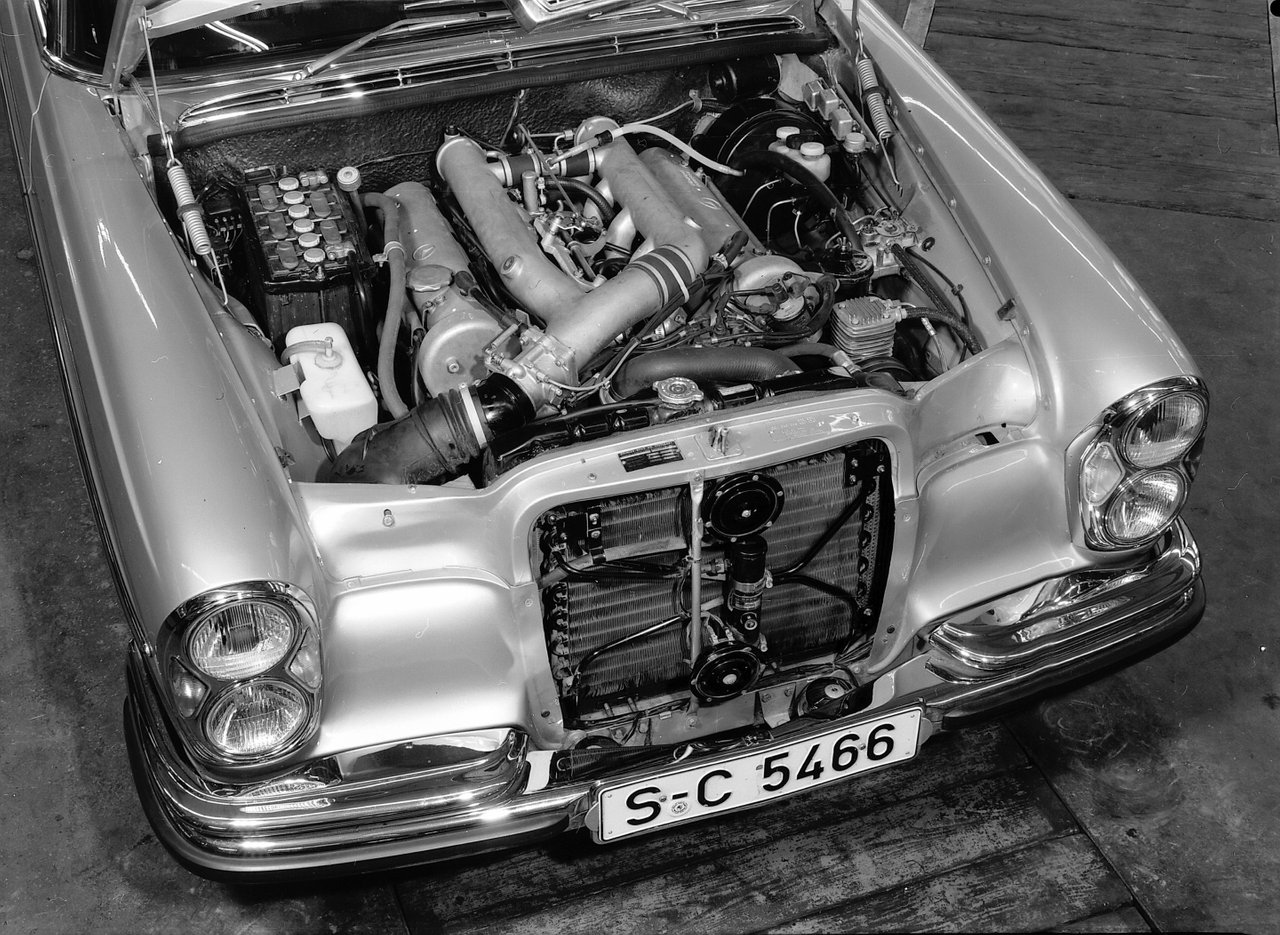
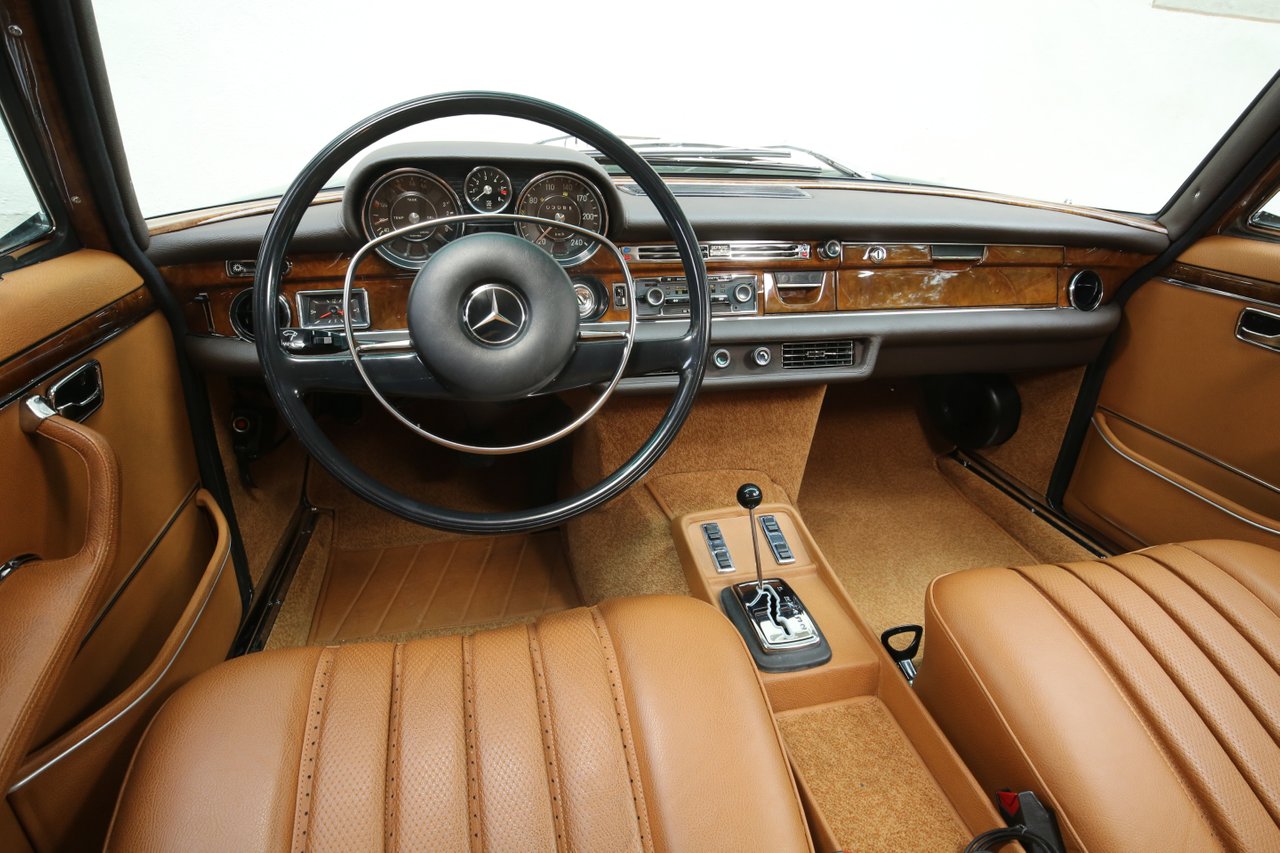
Credits to: Mercedes-Benz - 1968 300 6.3 SEL | Peak luxury of the 1970s.
Nonetheless, its crown jewel wasn't its rock solid, tank-like build quality, or the plush opulence. The SEL might look like a refined gentleman from the outside, but it was powered by a brutish, seemingly muscle-car engine. It had a massive 6.3-litre V8 under the bonnet, and although it created only a paltry 247hp, it became a quintessential example of a sleeper car. It's unassuming, yet hiding its savagery of a beating heart under a finely-tailored suit. Still, that alone wouldn't be enough to make it the ideal race-car.
However, this was AMG, and the world 'impossible' didn't really exist in their vocabulary. Some of the original work was done by Mercedes themselves, particularly by one engineer, Erich Waxenberger. Much of the efforts were under hush secrecy from his bosses, and a total of just five were made, with two of them being used for testing. The start to its racing career in the late 1960s proved fruitless, but it wasn't until it was sent over to AMG, that finally, in the 1971 Spa-Francorchamps 24-hours endurance race, that it finally achieved glory.
The Mother Of All Pigs.
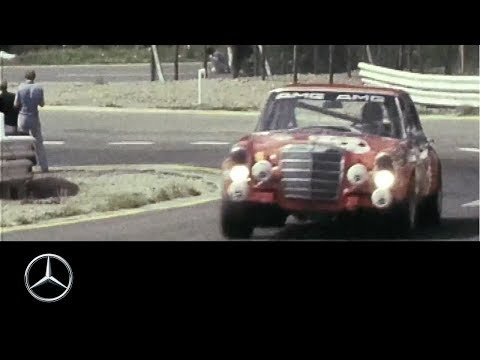
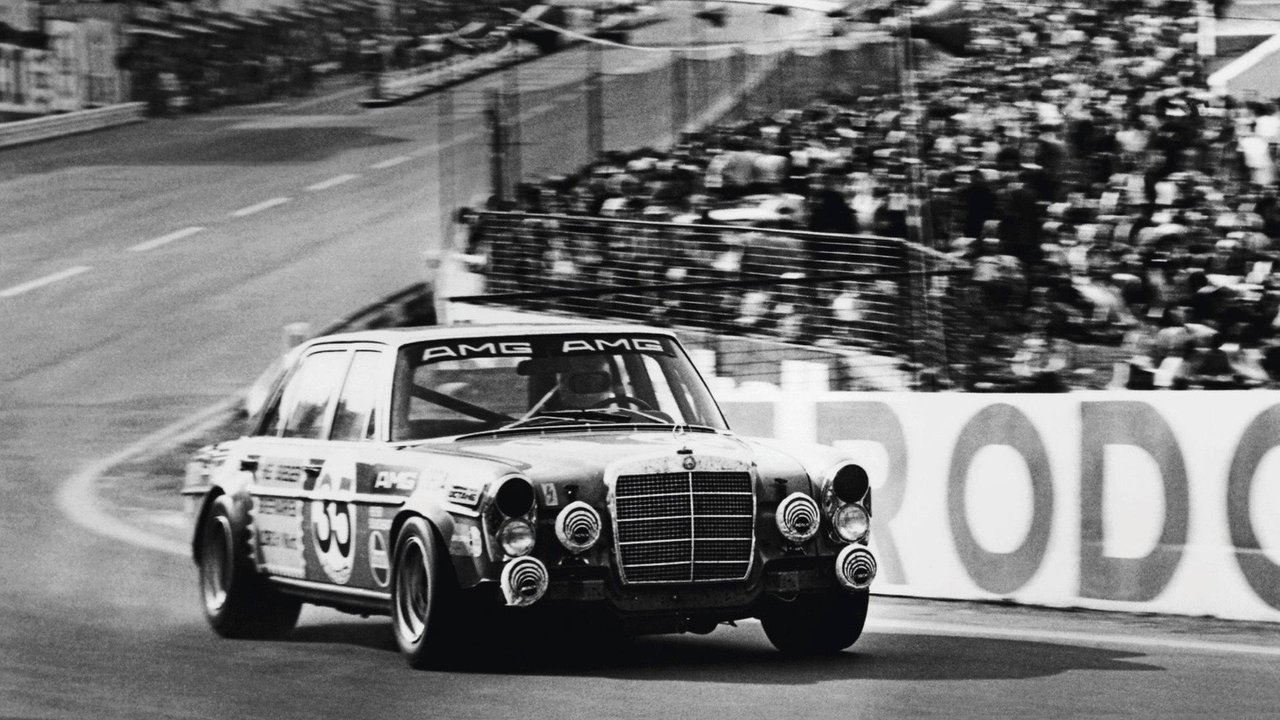
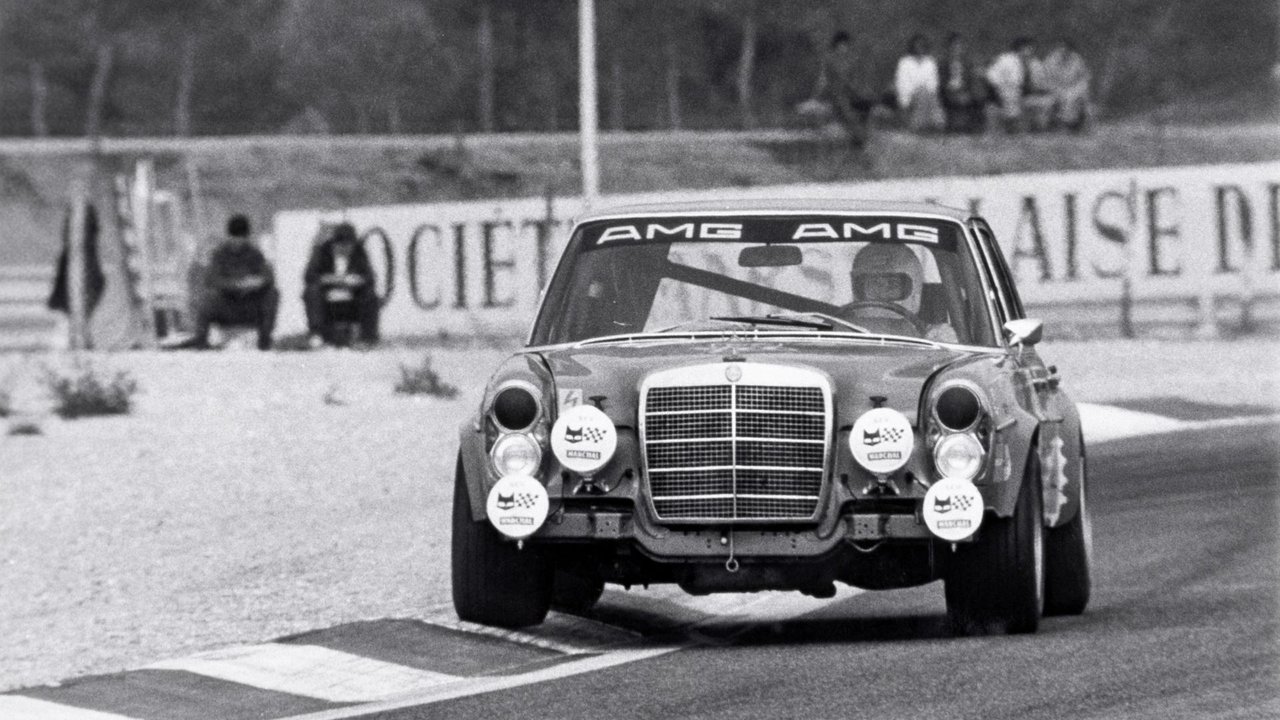
Credits to: Motor1 - 1971 Spa-Francorchamps 24-Hours Endurance | Going back in time.
If you thought the name, Red Pig, sounded more like a jeer, then you'd be right. When it first drove into the pit-lanes to be prepped for the gruelling hours ahead, everything who laid eyes on it laughed their hearts out, and thought it was all a joke. I mean, how couldn't you? By today's standards, it might seem decent, but back then, it was absolutely porky (pun intended), especially compared to the more svelte and athletic cars from BMW, Alfa Romeo, and Ford that the they had to contend with.
The Pig had widely flared fenders, thick tyres, vibrant firetruck-red paintwork, and a Christmas tree's worth of ornamental lights. In summary, it was comical in appearance. Just imagine parking a Rolls Royce on the Formula 1 starting grid, with a bottle of champagne in hand, and gold chains hanging off your neck. Plus, compared to the more seasoned and battle-tested machines from its competitors, "Die Rote Sau" theoretically had no chance of winning.


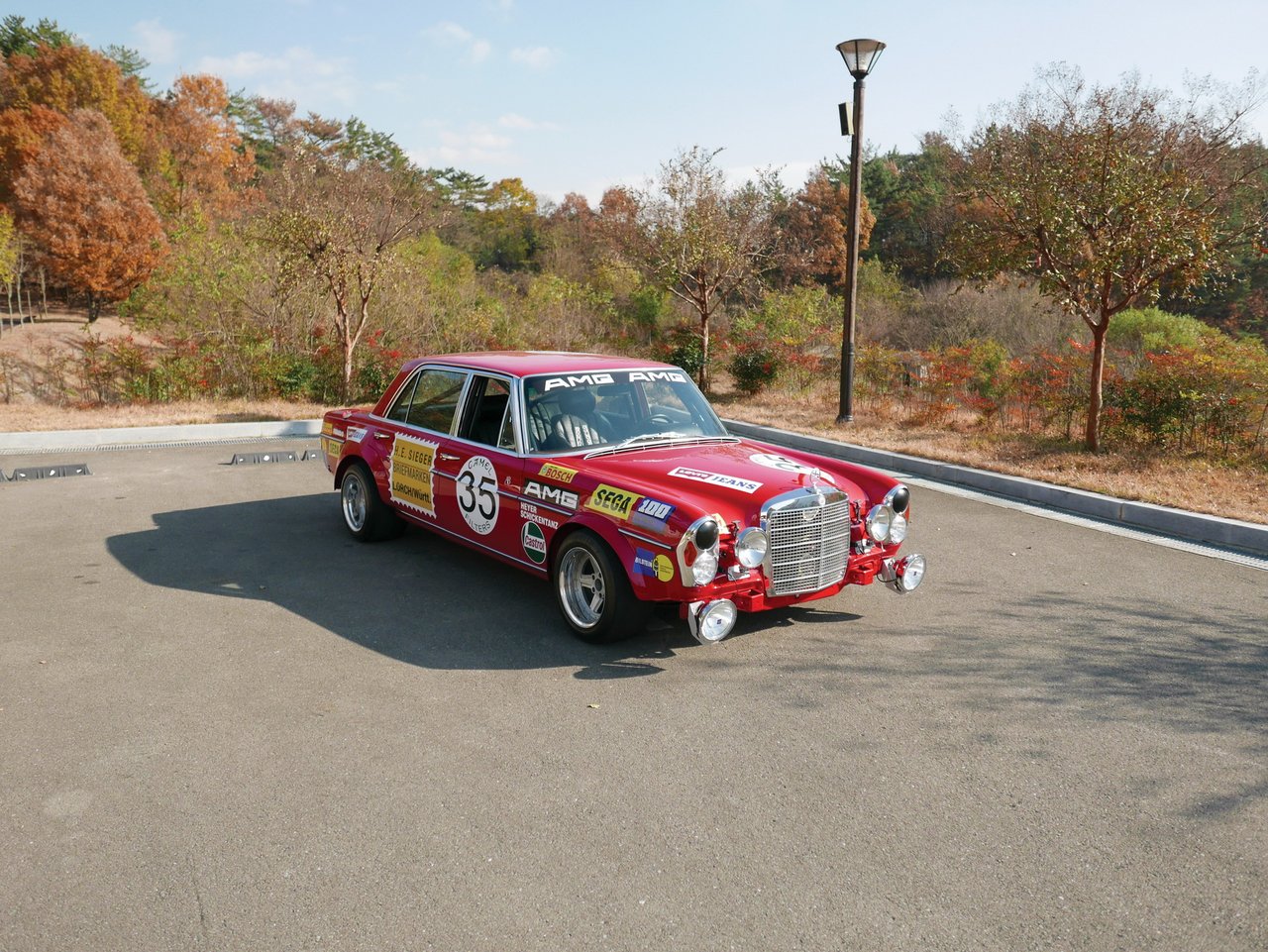
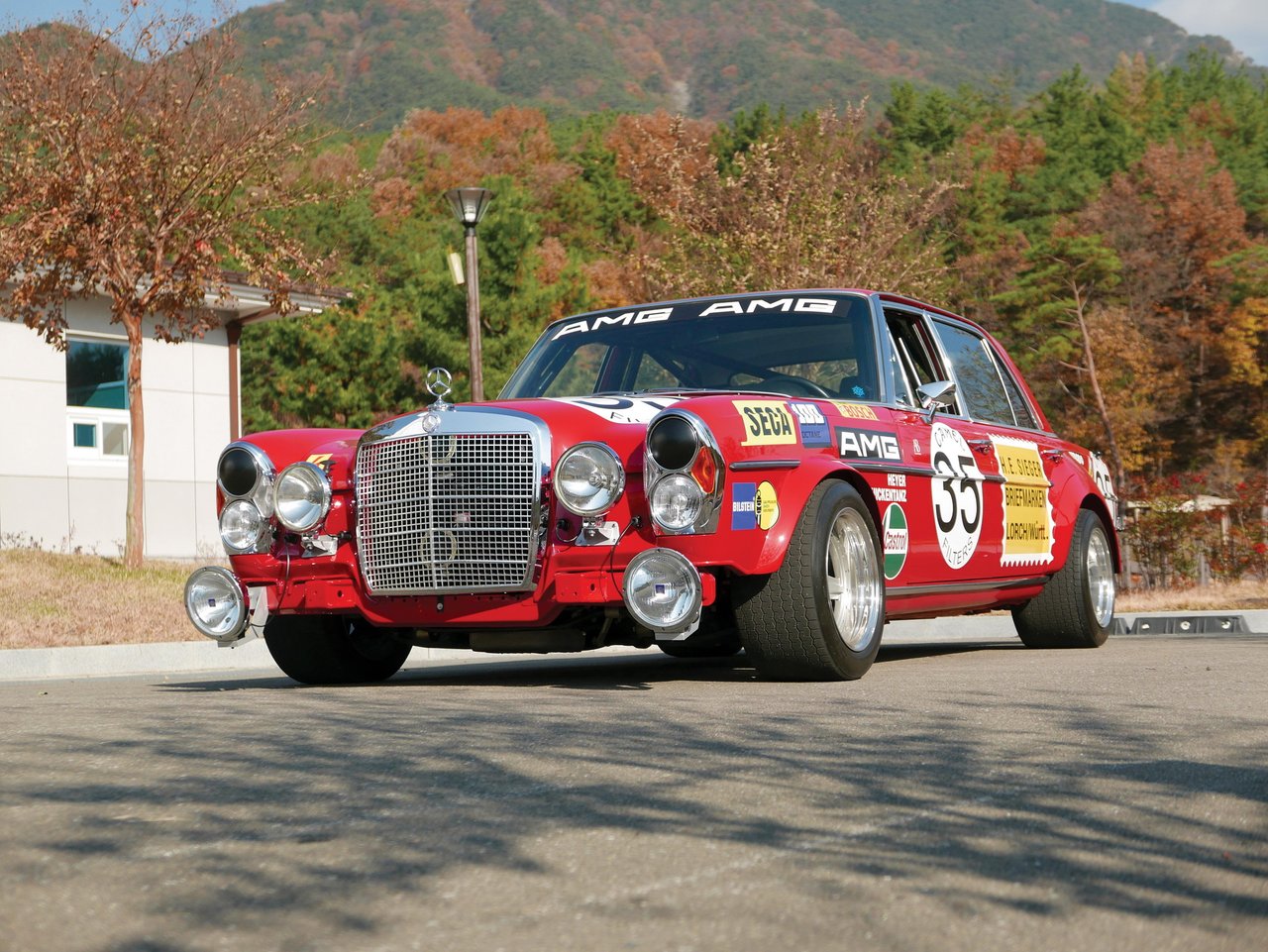
Credits to: RM Sotheby's - 1969 Mercedes-Benz 'Red Pig' | It looks just as silly, as it is fun!
But once it got going, the crowd's laughter turned into deafening awe, as the Red Pig passed car after car. A lot of work was put in to make sure this happened, and the transformation was very peculiar, to say the least. The lardy weight had to be trimmed, and in some places, great care and thought was put into it. The heavy Krupp-steel hull were replaced with lighter aluminium, most prominently the doors. Some of the exterior trim were removed, such as the front and rear bumpers, which added to the cartoonishly villainous look.
Yet, much of the comfy interior was kept the same. They didn't even remove the rear-seats, which would now be completely useless given that there's a huge roll-cage in the way of where your head and legs would go to. There were acres of soft lambswool carpeting, and thick German leather padding everywhere you touch. The dashboard still had a large analogue clock, which now that I think of it, could be useful in a 24-hour race, alongside heavy wood panels. Not wood laminate, mind you, but beautifully veneered wood like a grand piano.
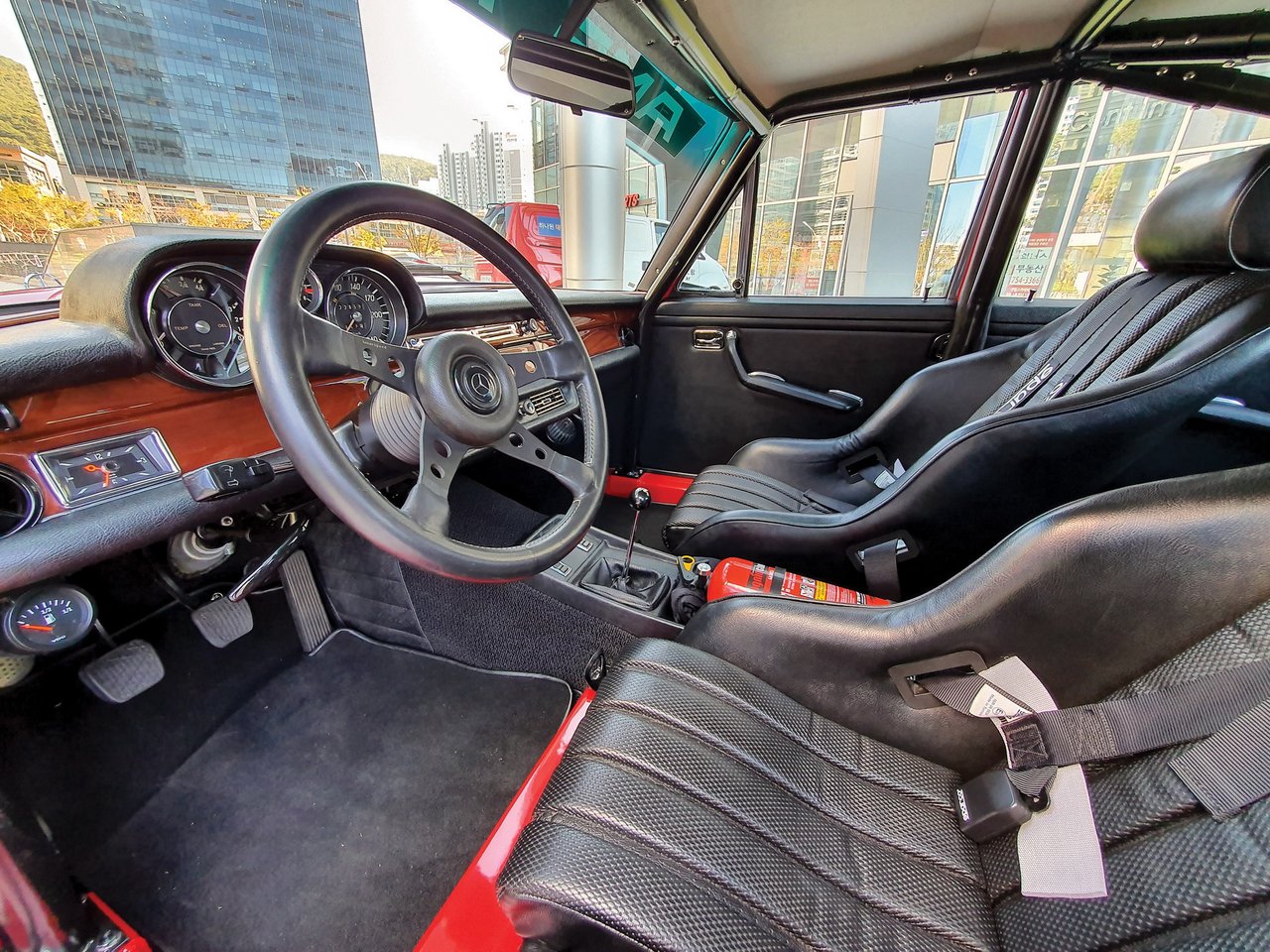
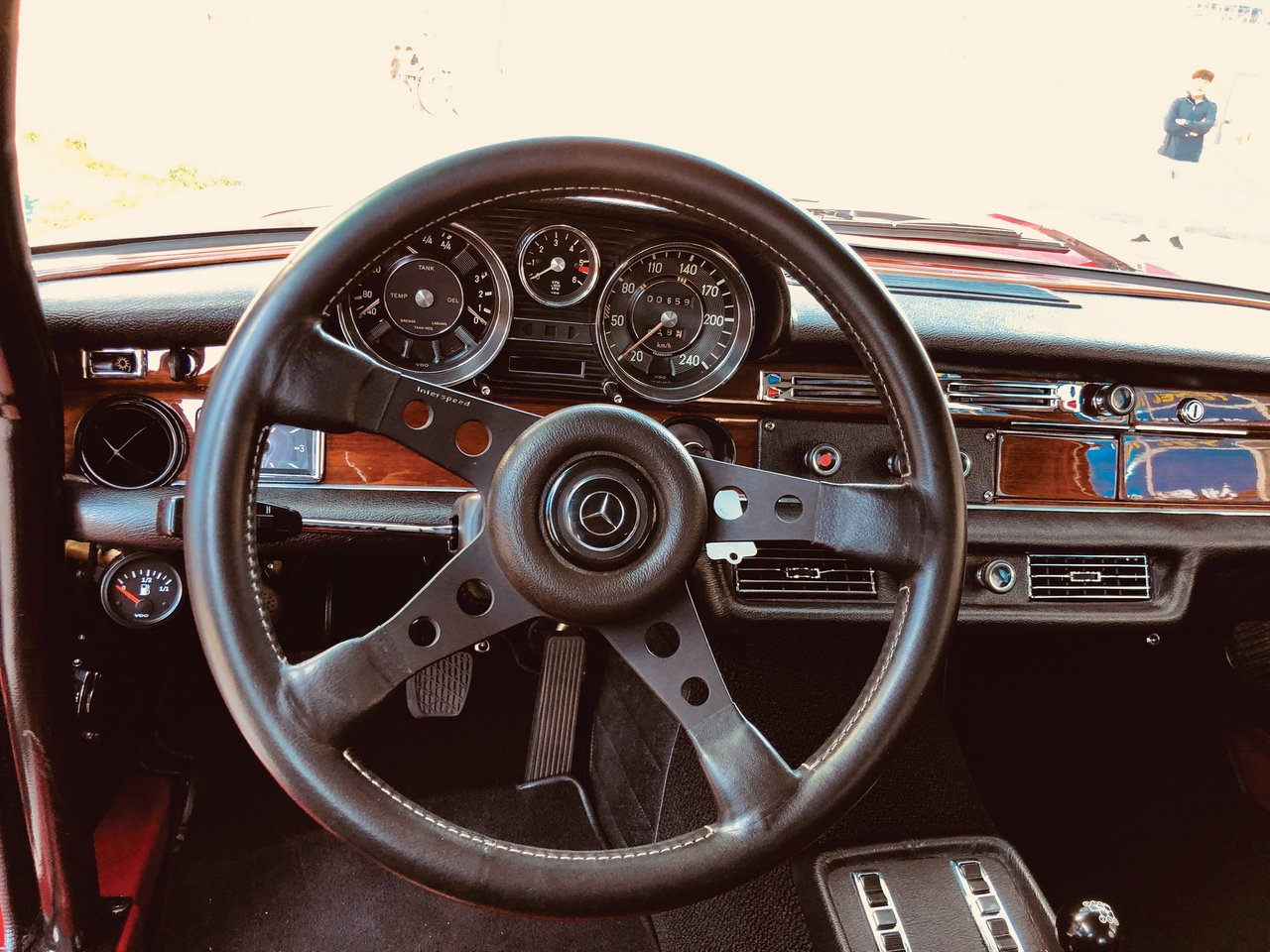
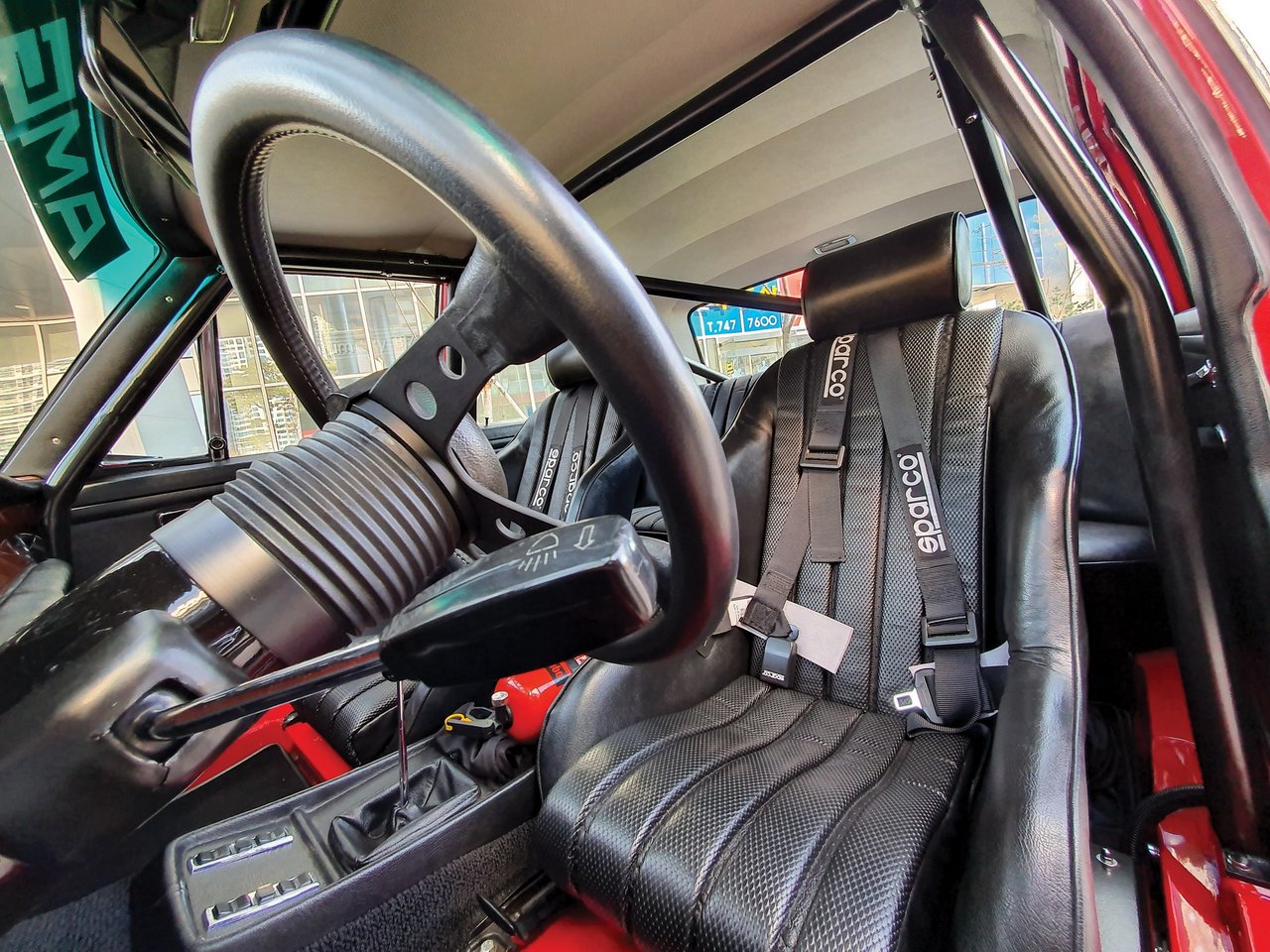
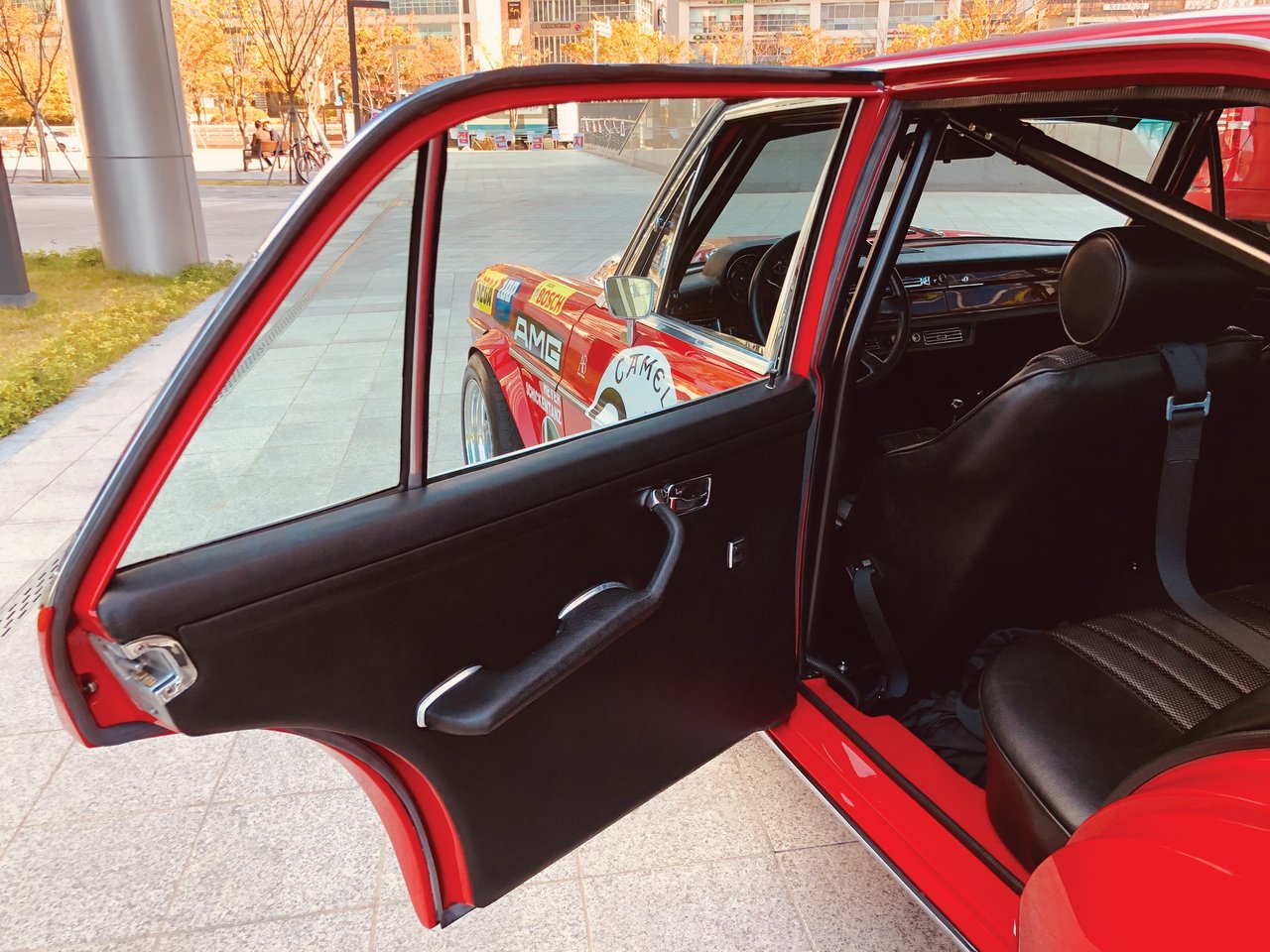
Credits to: RM Sotheby's - 1969 Mercedes-Benz 'Red Pig' | Weirdly comfy for a race-car.
Metaphorically, it's like going out for a marathon in a Tweed suit. This seemingly half-hearted attempt, intentional or not, predictably didn't save much weight at all, with the Red Pig still sitting at an overweight 1.5-tonnes. Beside its rivals, it weighed three-quarters-of-a-tonne heavier than the lightest cars on the grid. Yet, even having to carry an entire modern F1 car's worth of weight didn't slow it down, all because of the tuning that Mercedes and AMG made under the flesh.
The lazy 4-speed automatic was replaced with a ZF 5-speed manual, and what it was connected to was certainly its ace in the hole. The already gargantuan V8 was bored out, and its displacement was enlarged to 6.8-litres. This helped to increase power output to a whopping 420hp; more than double most of its competitors. The engine's 480lb-ft (650Nm) of torque is enough to move heaven and earth out of the way, and then there's the way it sounds. The Red Pig screamed and thundered like a volcanic eruption, echoing across Spa.
A Bloodline Begins.
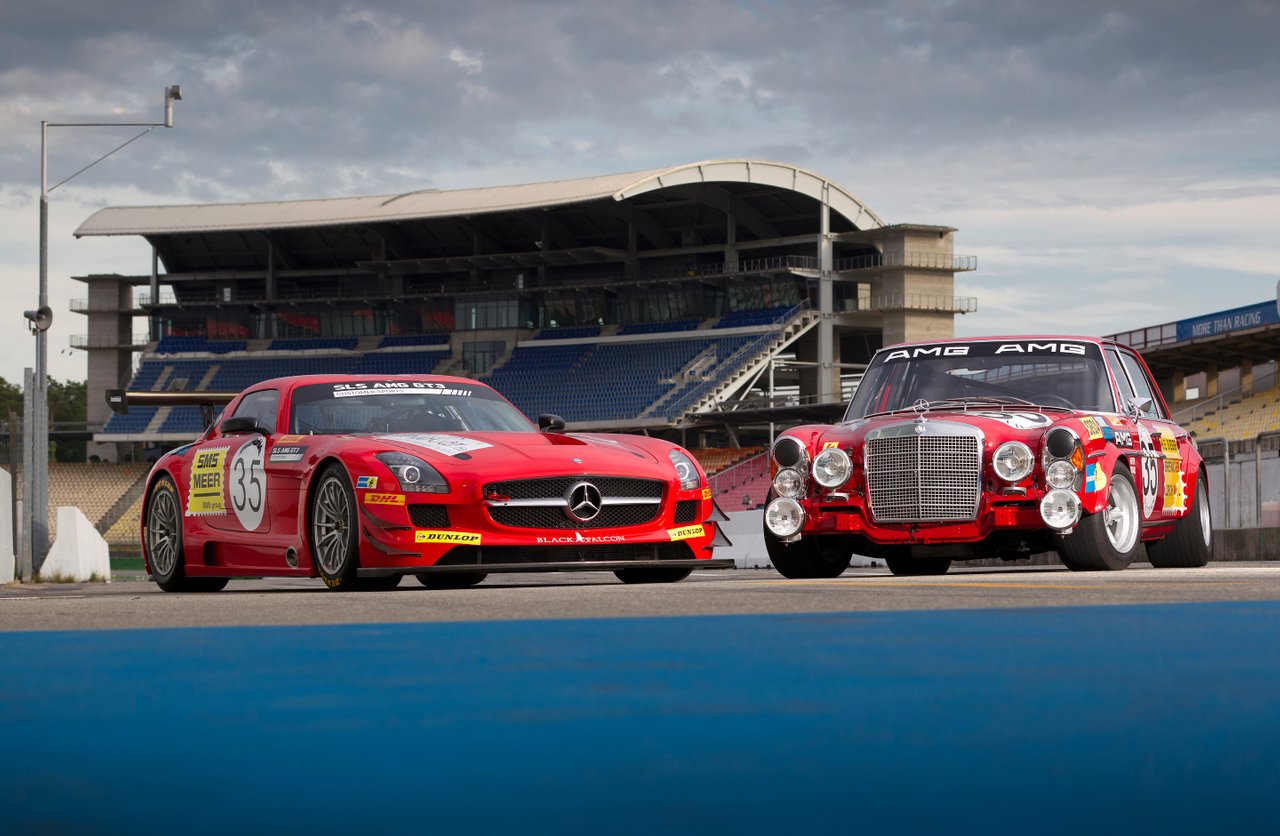

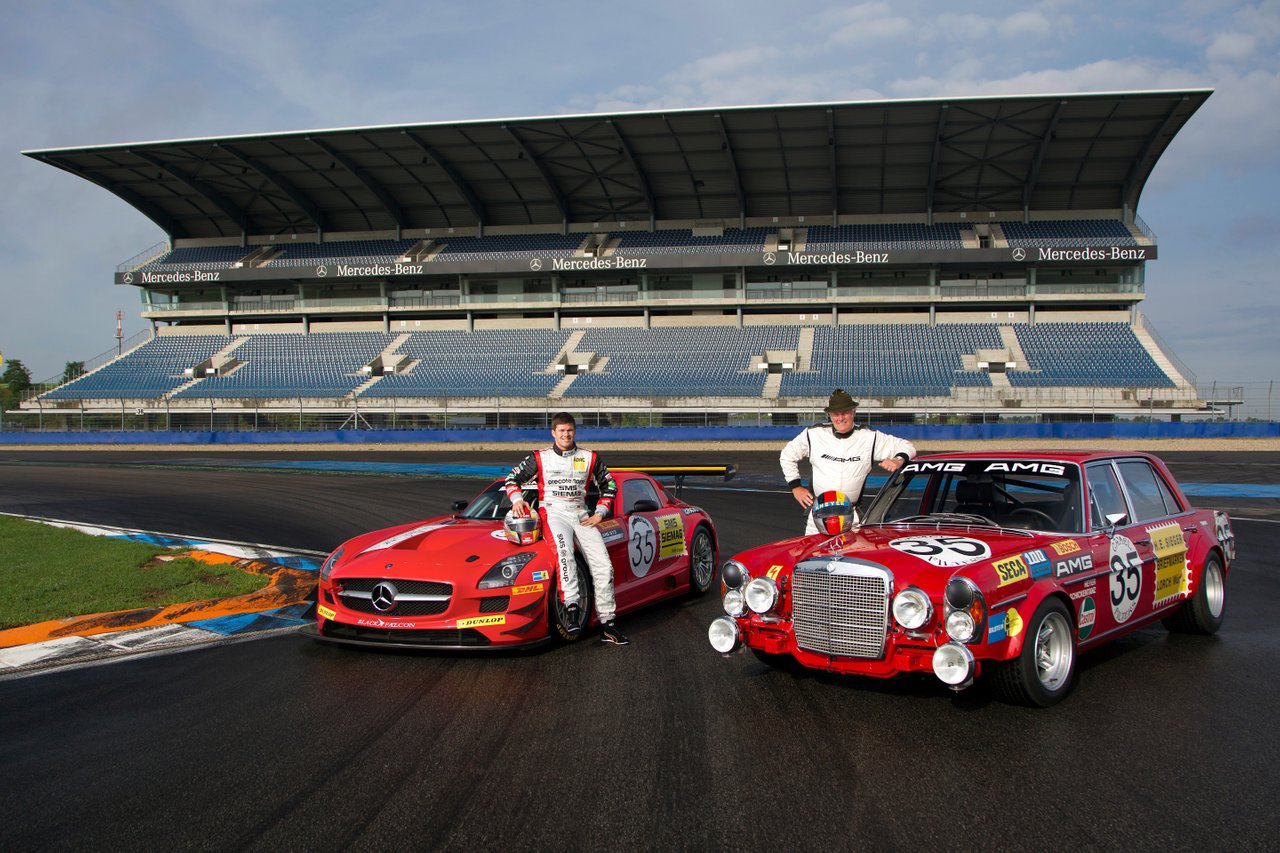

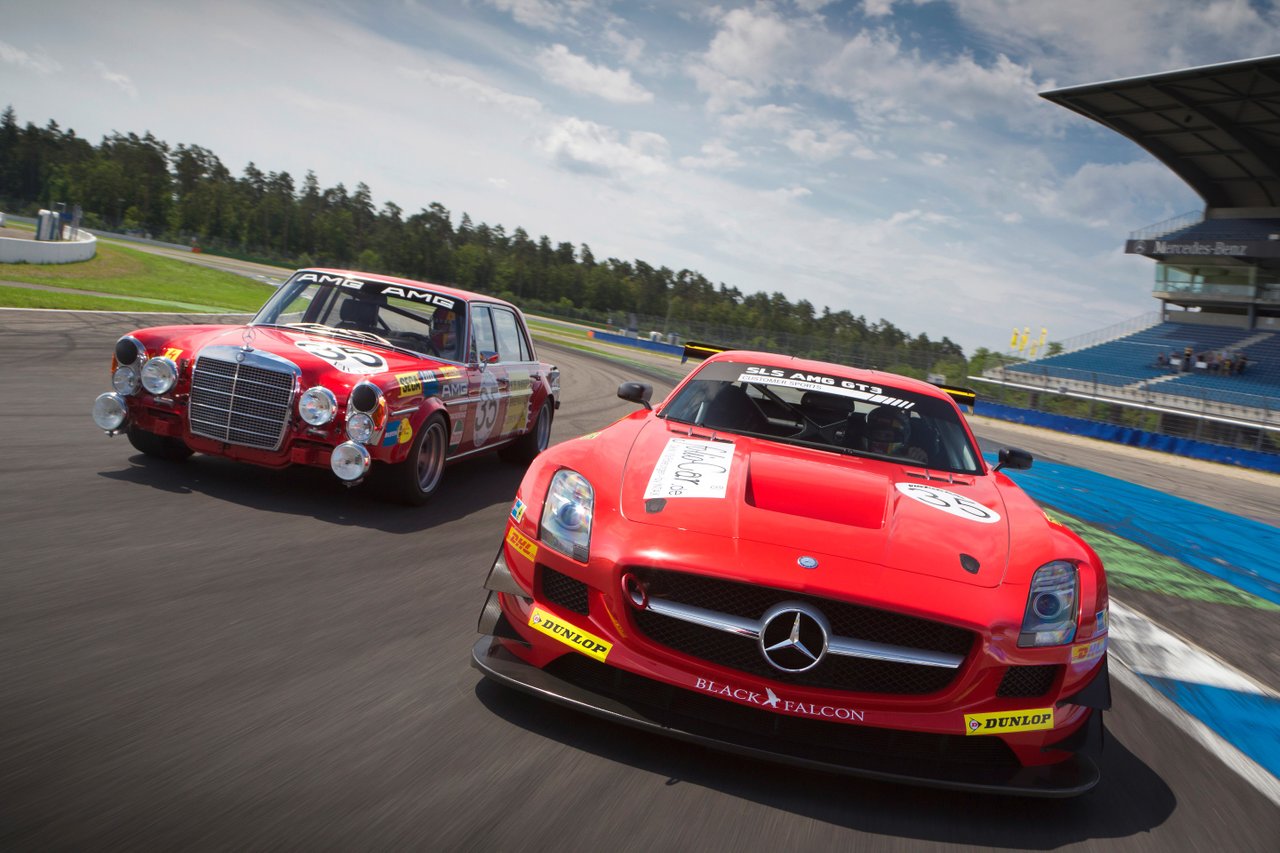
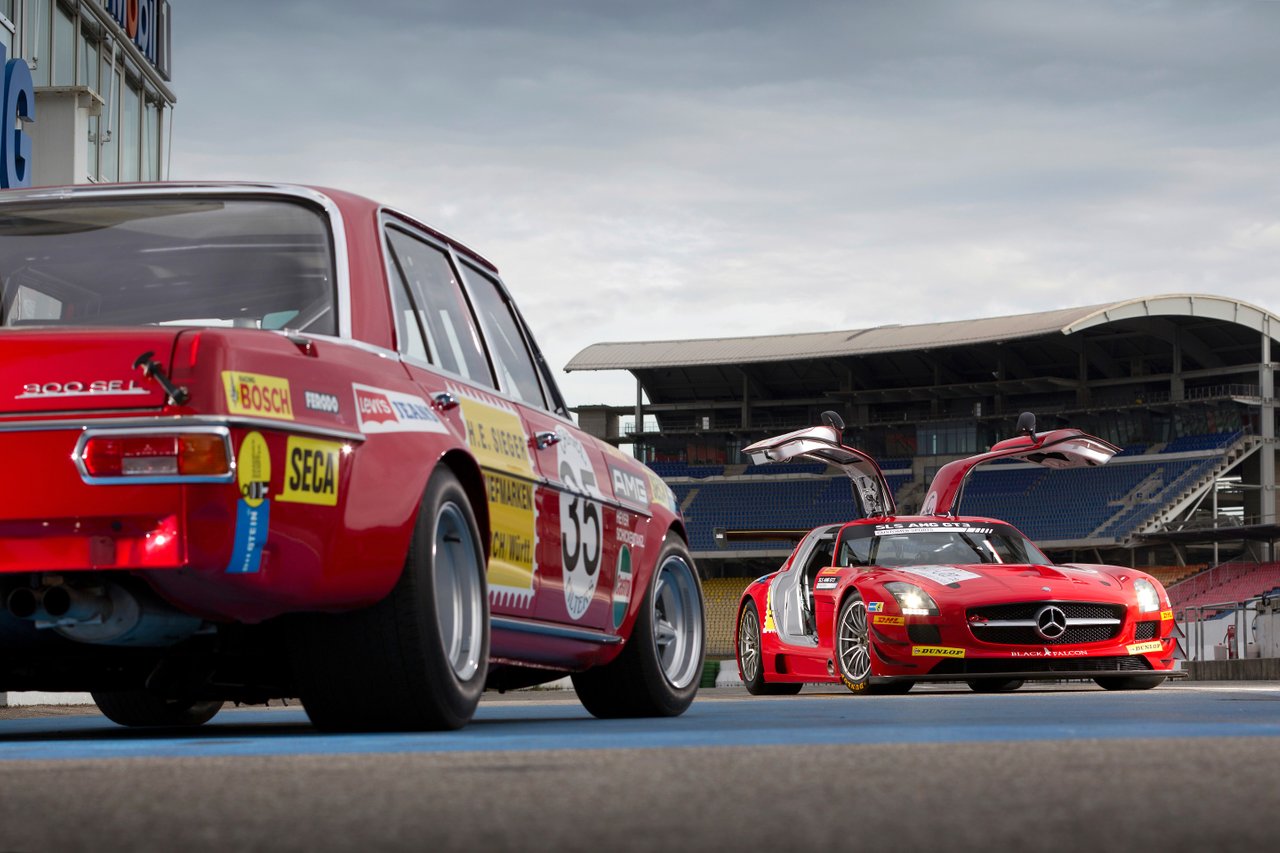
Credits to: Mercedes-Benz - AMG GT3, and Red Pig | Hans, and Kenneth Heyer... Like father, like son.
Once the chequered flag waved for the last time, the Red Pig handily won its class, and was only second overall. This was quite the achievement when you consider the pedigree, and the immense challenge it had lying ahead. This was no doubt helped by the single-minded and undeterred focus of its two pilots, Clemens Schickentanz and Hans Heyer (pictured above with his son), as they stormed across night and day. The Pig could've possibly won first overall, if it hadn't needed to stop by and pit so often.
Its monstrous engine had quite a thirst for petrol, and the otherworldly power it created was more than enough to shred its rear tyres. From zero to hero, Die Rote Sau went from a literal laughing stock, to a heroic icon that remains widely loved today. However, the end of this story isn't as legendary. One car became the sole known survivor in a museum, while others were sold to French aerospace company, Matra. There, its speed and heft made it the perfect dummy to test fighter-jet landing gear.
All its victories, accomplishments, and hard work likely disappeared behind a cloud of dust; ruined, wrecked, and mangled beyond recognition. While the body might not have lived to see the light of day, its spirits have survived. Since then, its DNA have underpinned 50 years of crafting some of the world's maddest, most insane automobiles. Now, anytime an AMG cruises by, you know where it all came from; this big, heavy, but stunningly powerful firetruck that shook the world of racing half-a-century ago.


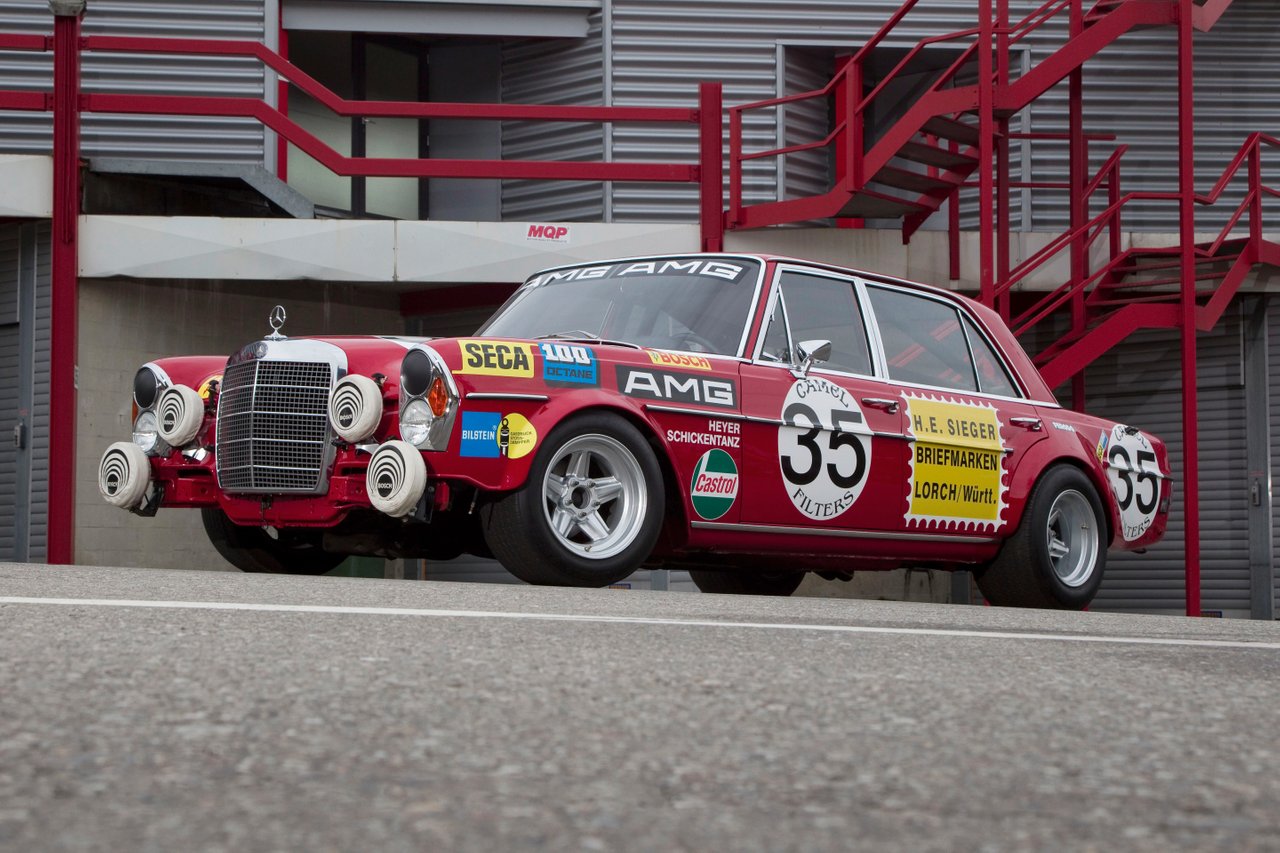

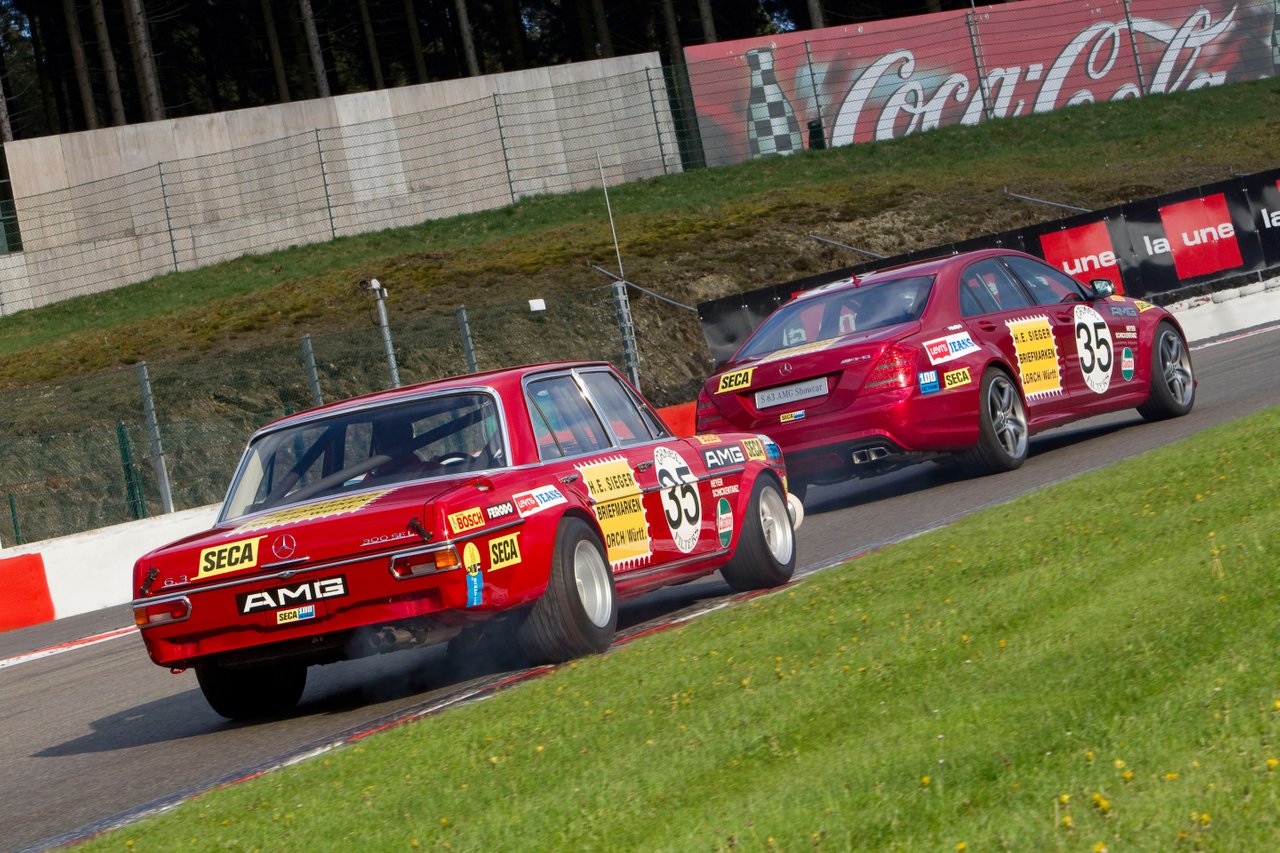
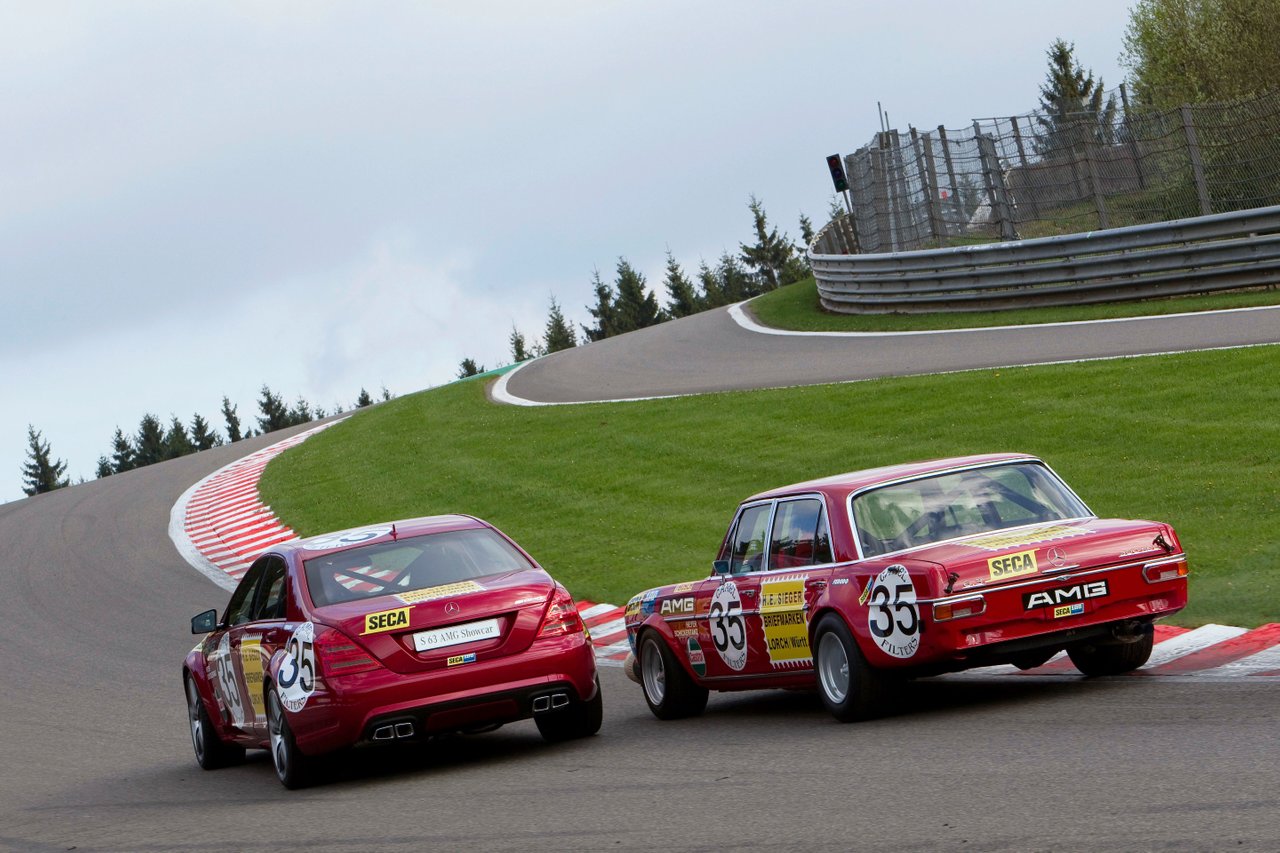
Credits to: Mercedes-Benz - S63 AMG, and Red Pig | They never change, do they?